Abstract
A study was made of the immunospecific lysis of mouse fibroblasts by rat lymphocytes sensitized in vitro against mouse cells in the presence or absence of macrophages. The cytolytic activity of rat lymph node cells decreased if they were filtered through a glass bead column prior to sensitization. This decrease could be reversed by the addition of defined amounts of peritoneal macrophages. The ratio of added macrophages to lymphoid cells was found to be critical. While small amounts of macrophages added within a defined dose range caused enhancement of activity, both of glass bead treated and of untreated populations, addition of higher quantities resulted in the inhibition of the reaction. A possible regulating role of macrophages in immune reactions is suggested.
Full text
PDF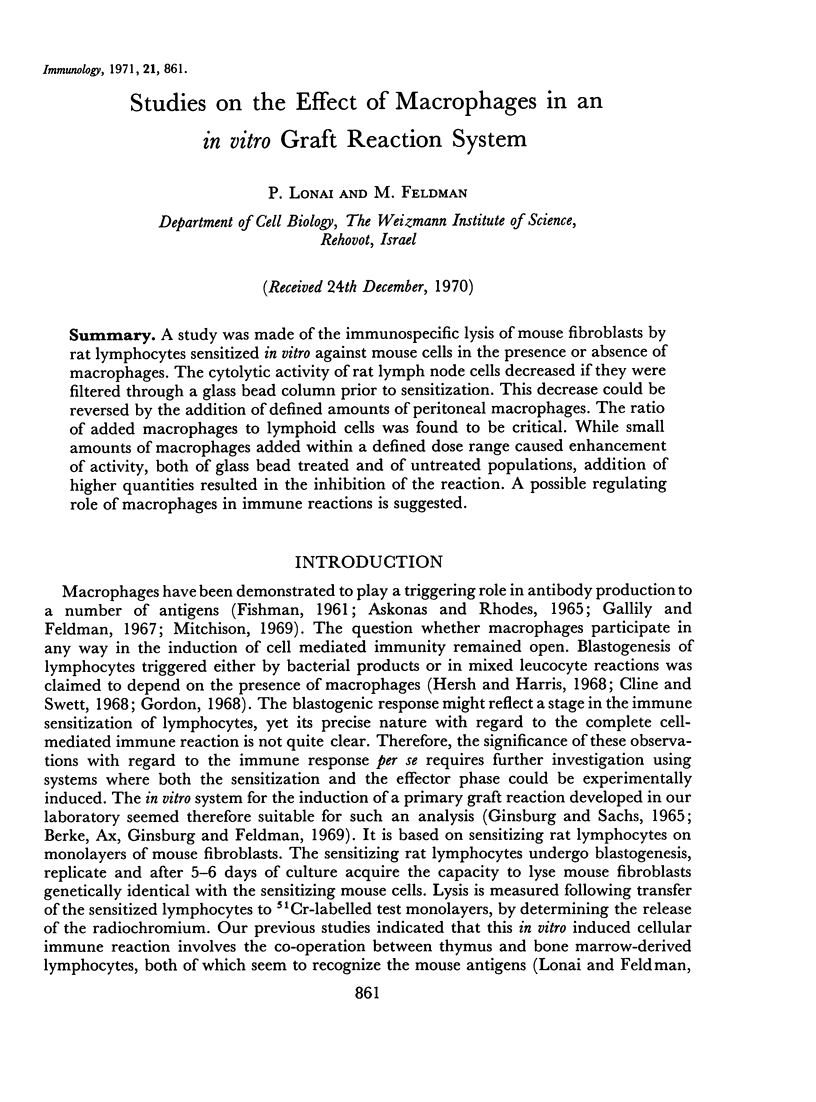
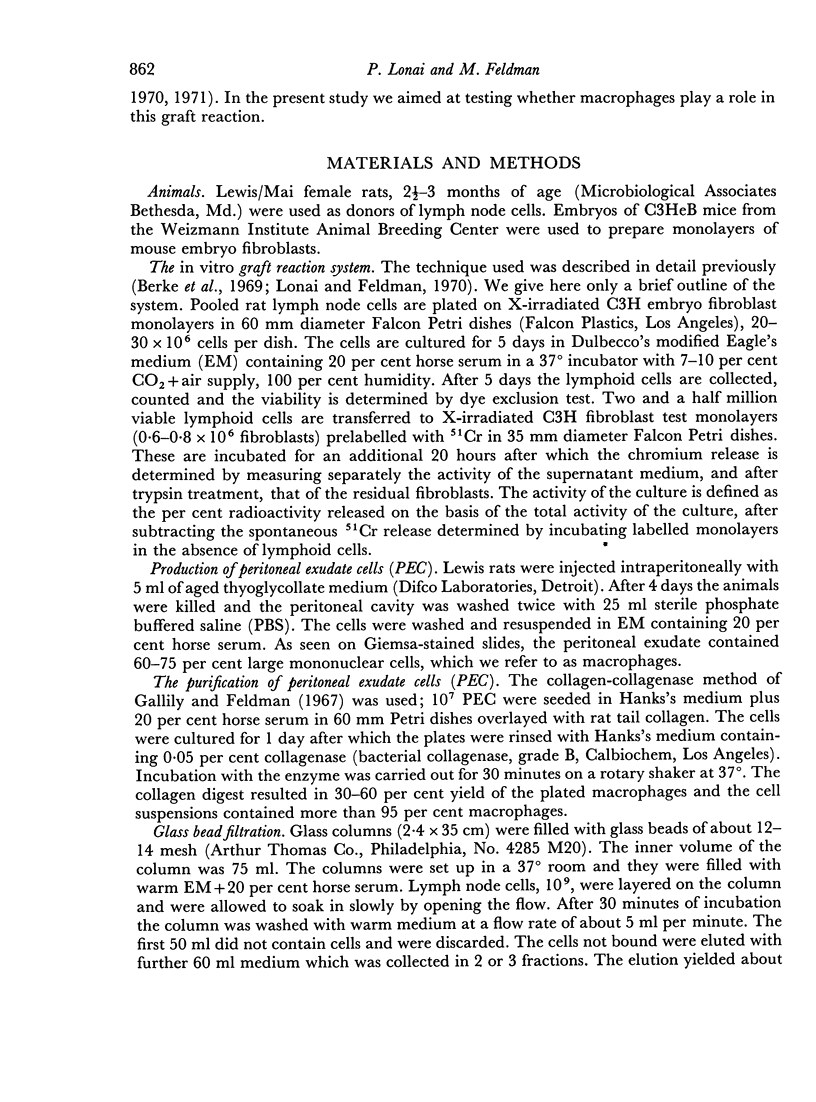
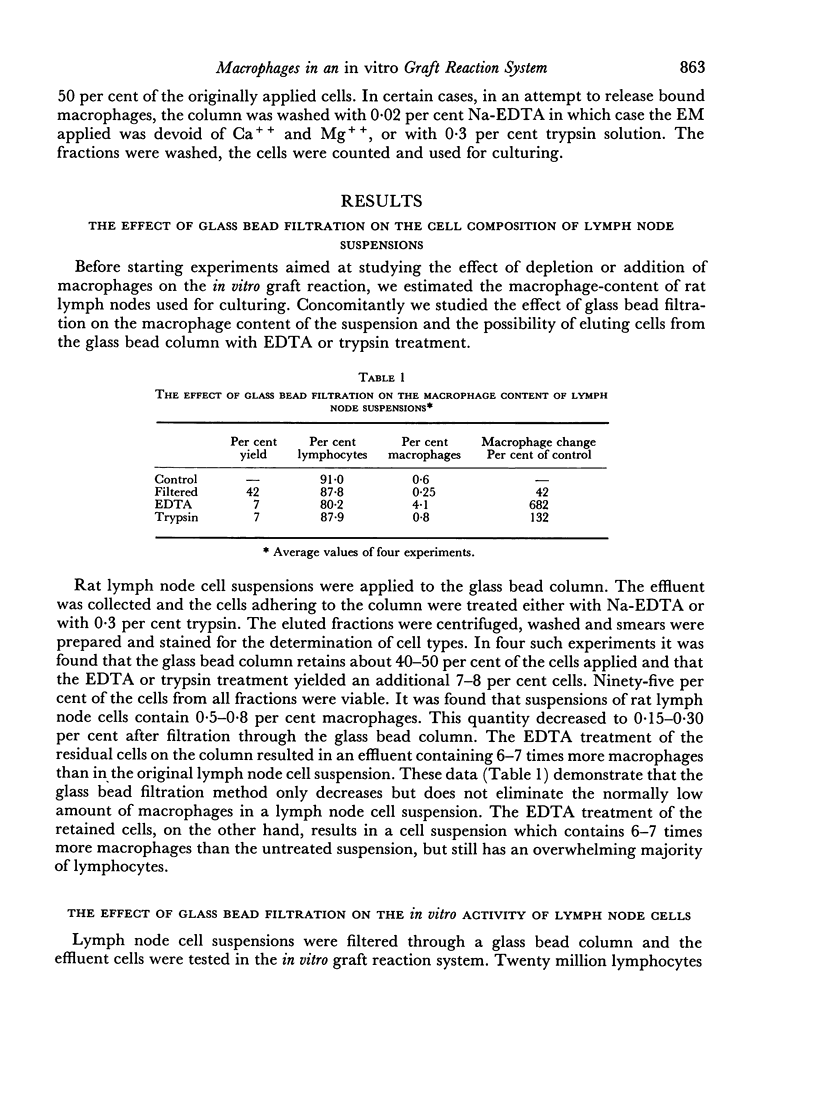
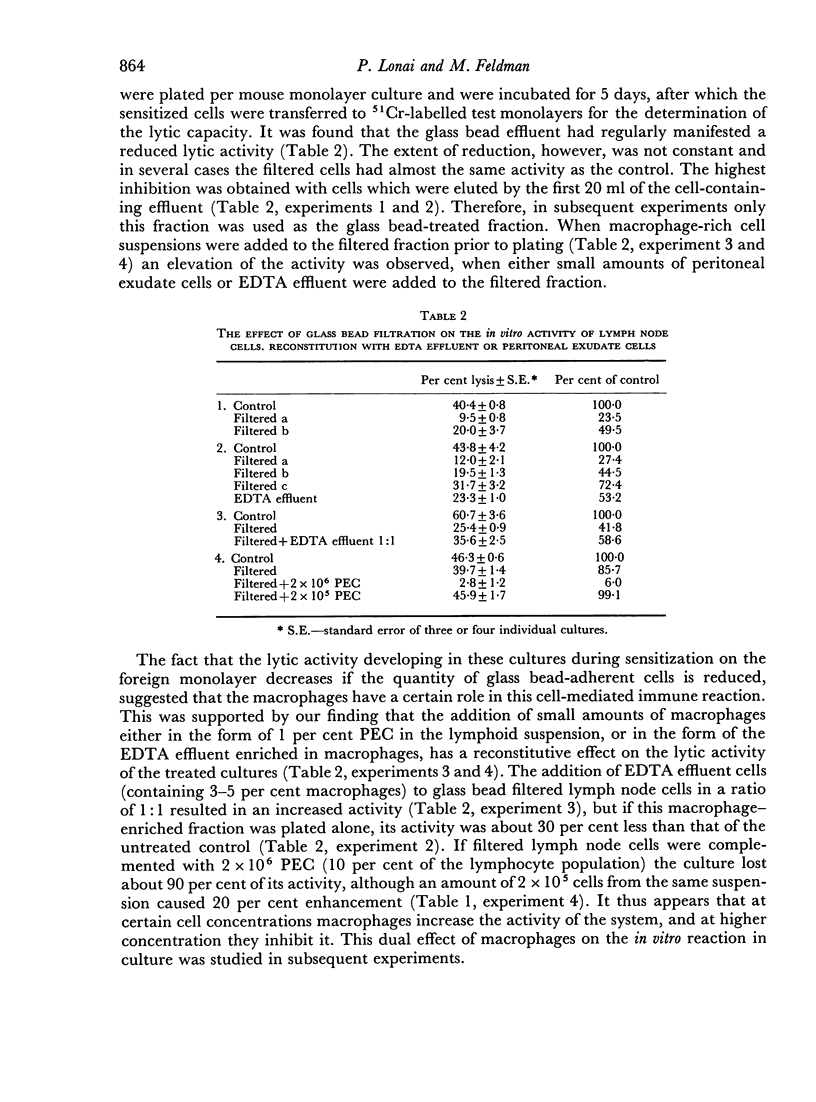
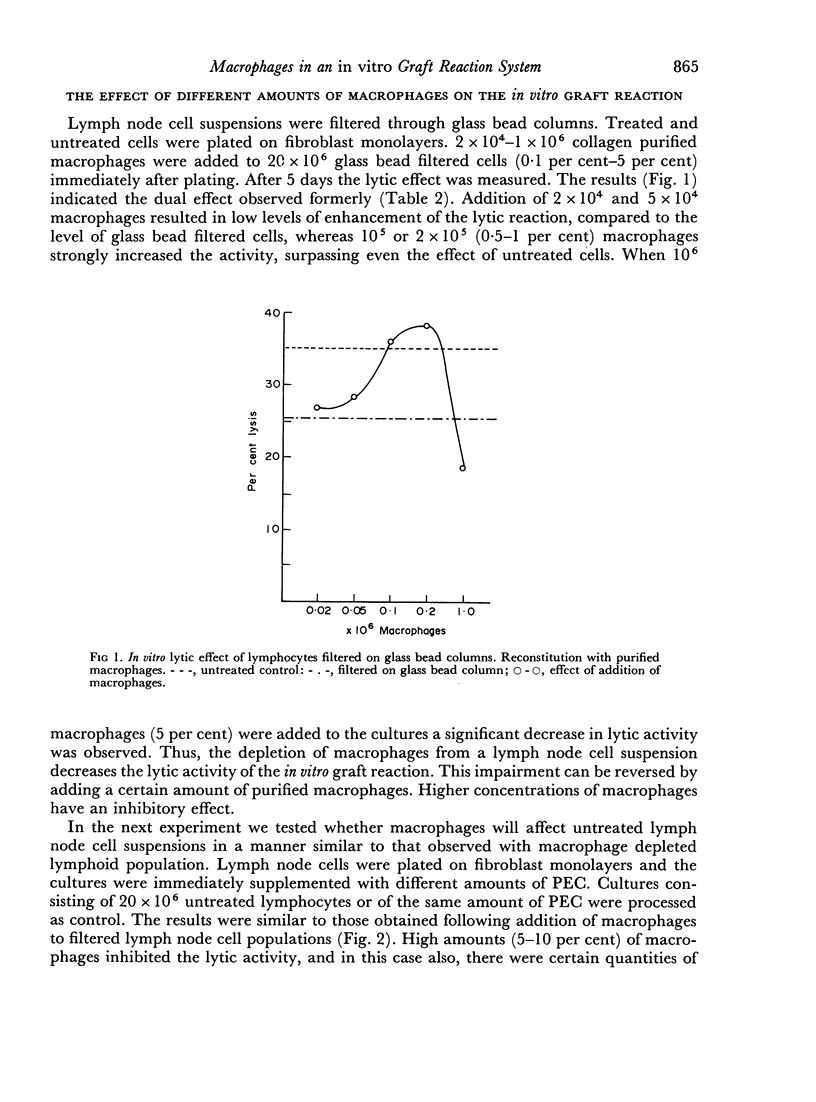
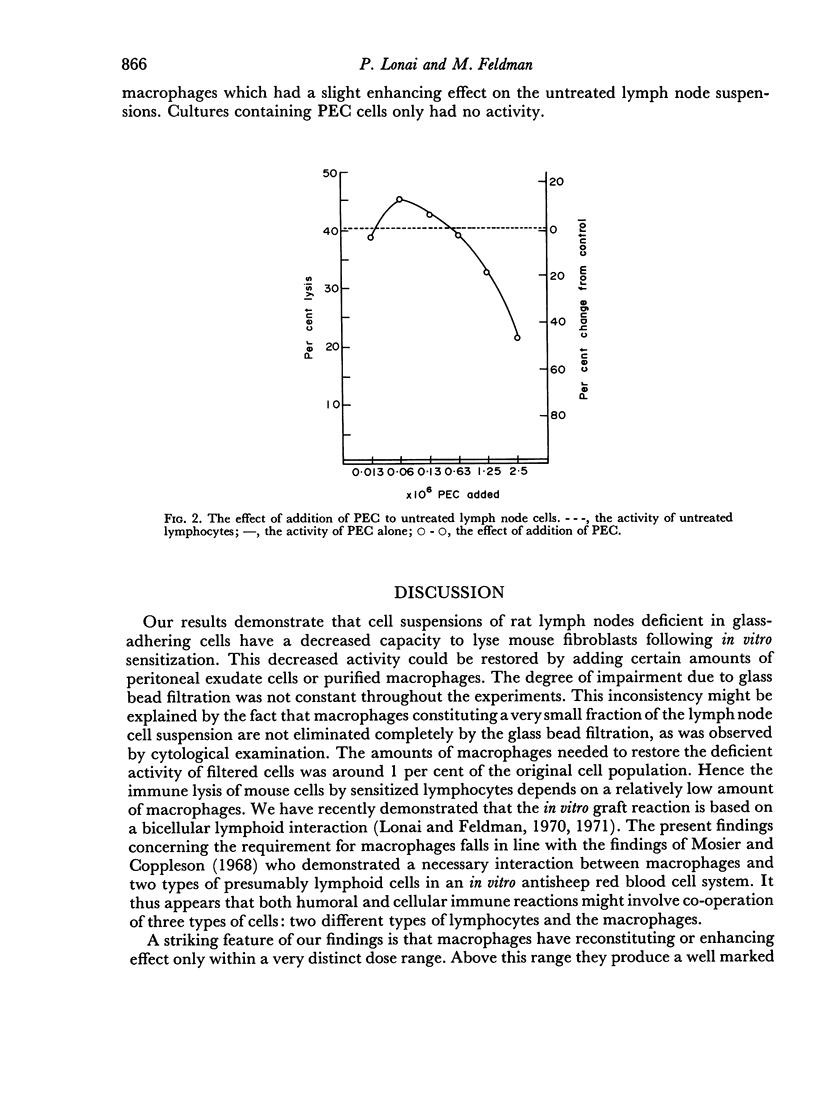
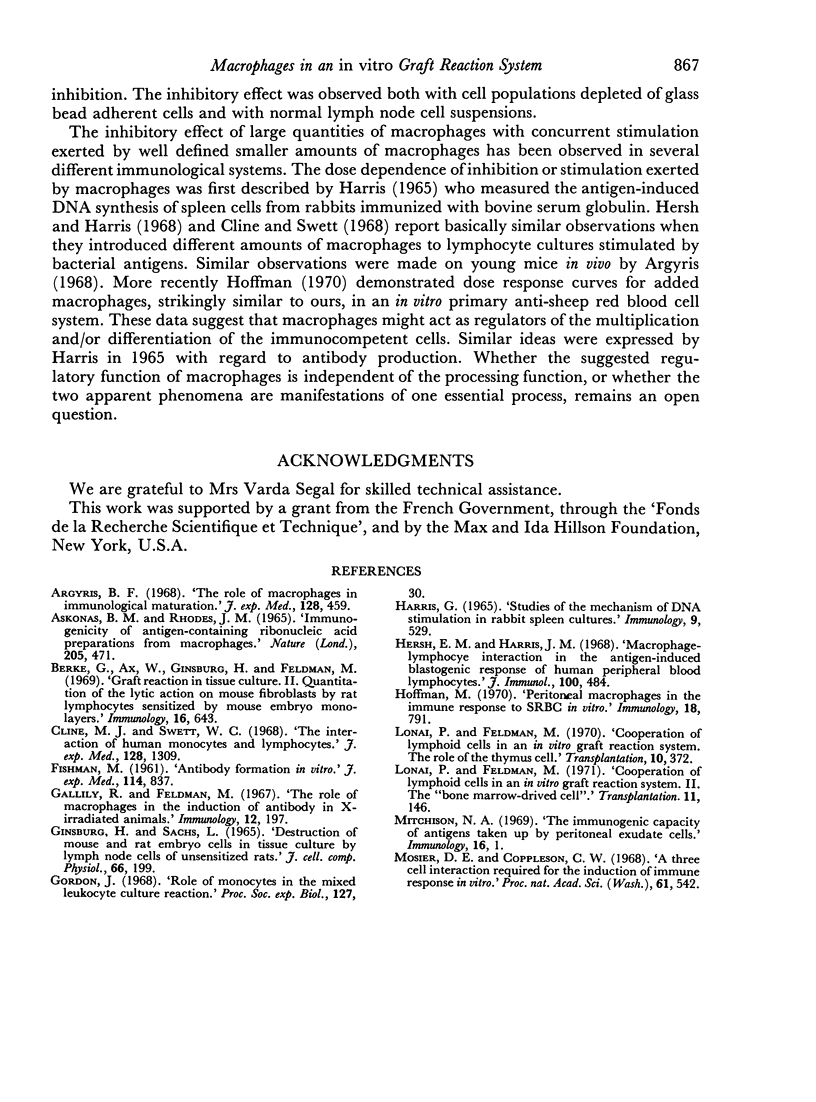
Selected References
These references are in PubMed. This may not be the complete list of references from this article.
- Argyris B. F. Role of macrophages in immunological maturation. J Exp Med. 1968 Sep 1;128(3):459–467. doi: 10.1084/jem.128.3.459. [DOI] [PMC free article] [PubMed] [Google Scholar]
- Berke G., Ax W., Ginsburg H., Feldman M. Graft reaction in tissue culture. II. Quantification of the lytic action on mouse fibroblasts by rat lymphocytes sensitized on mouse embryo monolayers. Immunology. 1969 May;16(5):643–657. [PMC free article] [PubMed] [Google Scholar]
- Cline M. J., Swett V. C. The interaction of human monocytes and lymphocytes. J Exp Med. 1968 Dec 1;128(6):1309–1325. doi: 10.1084/jem.128.6.1309. [DOI] [PMC free article] [PubMed] [Google Scholar]
- FISHMAN M. Antibody formation in vitro. J Exp Med. 1961 Dec 1;114:837–856. doi: 10.1084/jem.114.6.837. [DOI] [PMC free article] [PubMed] [Google Scholar]
- Gallily R., Feldman M. The role of macrophages in the induction of antibody in x-irradiated animals. Immunology. 1967 Feb;12(2):197–206. [PMC free article] [PubMed] [Google Scholar]
- Ginsburg H., Sachs L. Destruction of mouse and rat embryo cells in tissue culture by lymph node cells from unsensitized rats. J Cell Physiol. 1965 Oct;66(2):199–219. doi: 10.1002/jcp.1030660207. [DOI] [PubMed] [Google Scholar]
- Gordon J. Role of monocytes in the mixed leukocyte culture reaction. Proc Soc Exp Biol Med. 1968 Jan;127(1):30–33. doi: 10.3181/00379727-127-32613. [DOI] [PubMed] [Google Scholar]
- Harris G. Studies of the mechanism of antigen stimulation of DNA synthesis in rabbit spleen cultures. Immunology. 1965 Dec;9(6):529–541. [PMC free article] [PubMed] [Google Scholar]
- Hoffmann M. Peritoneal macrophages in the immune response to SRBC in vitro. Immunology. 1970 Jun;18(6):791–797. [PMC free article] [PubMed] [Google Scholar]
- Lonai P., Feldman M. Cooperation of lymphoid cells in an in vitro graft reaction system. The role of the thymus cell. Transplantation. 1970 Nov;10(5):372–381. doi: 10.1097/00007890-197011000-00003. [DOI] [PubMed] [Google Scholar]
- Mitchison N. A. The immunogenic capacity of antigen taken up by peritoneal exudate cells. Immunology. 1969 Jan;16(1):1–14. [PMC free article] [PubMed] [Google Scholar]
- Mosier D. E., Coppleson L. W. A THREE-CELL INTERACTION REQUIRED FOR THE INDUCTION OF THE PRIMARY IMMUNE RESPONSE in vitro. Proc Natl Acad Sci U S A. 1968 Oct;61(2):542–547. doi: 10.1073/pnas.61.2.542. [DOI] [PMC free article] [PubMed] [Google Scholar]


